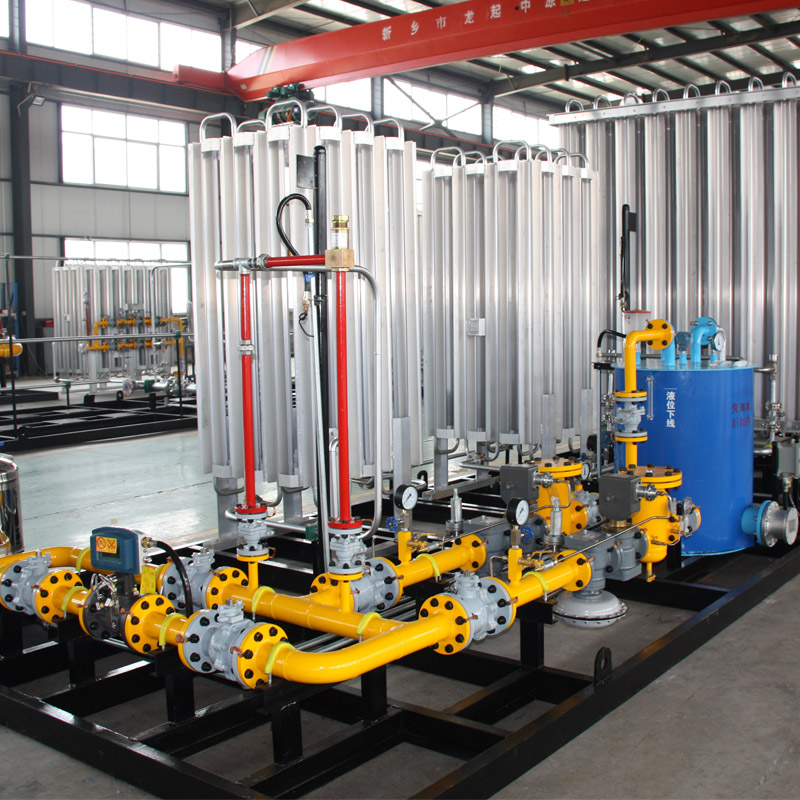
Dec . 21, 2024 19:20
Back to list
gas pressure reducer
Understanding Gas Pressure Reducers A Key Component in Gas Systems
Gas pressure reducers are essential devices used in various industrial and residential applications to ensure the safe and efficient use of gaseous fuels. These devices play a significant role in maintaining optimal pressure levels, preventing overpressure situations, and ensuring the reliable operation of gas-powered systems. Understanding the function, types, applications, and importance of gas pressure reducers is crucial for anyone involved in gas management and utilization.
What is a Gas Pressure Reducer?
A gas pressure reducer, also known as a gas regulator, is a mechanical device designed to reduce the pressure of gas from a high-pressure source to a lower, more manageable pressure. These devices are typically used with natural gas, propane, and other gaseous fuels. By regulating the pressure, they ensure that gas is delivered at a constant and safe pressure for various applications, including heating, cooking, and industrial processes.
How Does a Gas Pressure Reducer Work?
The operation of a gas pressure reducer is relatively straightforward. When gas flows into the regulator from a high-pressure source, it encounters a diaphragm or spring mechanism inside the device. As the gas pressure increases, it moves the diaphragm, which in turn regulates the gas flow to maintain the desired output pressure. This feedback mechanism ensures that the outlet pressure remains stable, even if the inlet pressure fluctuates.
Gas pressure reducers often come equipped with adjustment screws that allow users to set the desired output pressure based on their specific needs. This adaptability is important for applications that require precise pressure control.
Types of Gas Pressure Reducers
Gas pressure reducers come in various types, each designed for specific applications. The most common types include
1. Single-Stage Regulators These are simple devices that are often used in household applications where the input pressure does not vary significantly. They provide a single level of pressure reduction.
2. Two-Stage Regulators These regulators control pressure in two stages. The first stage reduces the high input pressure to an intermediate level, while the second stage further reduces it to the desired output pressure. Two-stage regulators are ideal for applications where gas supply pressure fluctuates widely, ensuring stability and consistent flow.
gas pressure reducer

4. Ultralow Pressure Regulators Designed for applications requiring extremely low pressure, these are used in sensitive equipment where standard pressure regulation would be insufficient.
Applications of Gas Pressure Reducers
Gas pressure reducers are utilized in numerous applications across different industries. Common uses include
- Residential Heating and Cooking In households, gas pressure reducers ensure that appliances such as furnaces, water heaters, and stoves operate safely and efficiently by providing a controlled supply of gas.
- Industrial Processes Factories and manufacturing plants rely on gas pressure reducers to power machinery, boilers, and heating systems, which often require specific pressure levels for optimal operation.
- Commercial Kitchens Restaurants depend on gas pressure reducers to maintain consistent gas flow to kitchen equipment, ensuring that cooking processes are not interrupted due to pressure variations.
- Laboratories In research and testing environments, precise control of gas pressure is crucial for accurate results, making pressure reducers indispensable.
Importance of Gas Pressure Reducers
The significance of gas pressure reducers cannot be overstated. They ensure safety by preventing overpressure situations that can lead to gas leaks, explosions, or equipment damage. Additionally, they contribute to energy efficiency by ensuring that gas is used effectively, which can lower utility costs.
In conclusion, gas pressure reducers are vital components in gas management systems, providing safe and reliable operation across various applications. Understanding their function, types, and applications can help users make informed decisions regarding their use in residential, commercial, and industrial environments. Whether you're managing a household or operating a large-scale facility, ensuring proper gas pressure regulation is essential for safety and efficiency.
Next:
Latest news
-
Safety Valve Spring-Loaded Design Overpressure ProtectionNewsJul.25,2025
-
Precision Voltage Regulator AC5 Accuracy Grade PerformanceNewsJul.25,2025
-
Natural Gas Pressure Regulating Skid Industrial Pipeline ApplicationsNewsJul.25,2025
-
Natural Gas Filter Stainless Steel Mesh Element DesignNewsJul.25,2025
-
Gas Pressure Regulator Valve Direct-Acting Spring-Loaded DesignNewsJul.25,2025
-
Decompression Equipment Multi-Stage Heat Exchange System DesignNewsJul.25,2025

